In this video, Nathan Lawrence reveals a stunning, ignored and largely unknown principle concerning understanding end time Bible prophecy—something that the so-called biblical prophecy “experts” will never tell you because if they did, it would take away their source of profit ($$$), because YOU would no longer listen to them and buy their junk!
Category Archives: Prophecy, Biblical
Beware of the End Times Prophecy Gurus Who Claim to Hear From Elohim!
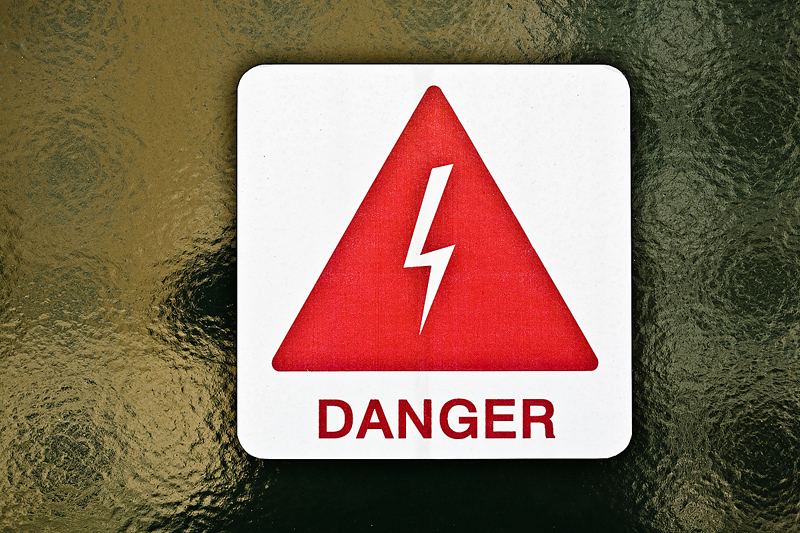
In these last days, and especially with the advent of the internet, numerous self-proclaimed and so-called prophets have arisen in the Christian church, who claim to have an inside communication track with Elohim. Claims are one thing, reality and biblical Truth are another, totally different thing.
Face it. Who does not want to know what the future holds for them, especially in these days of tenuous uncertainty? In the current “pandem!c” crisis, many well meaning Bible believers are wondering whether they will be able to keep their jobs, their homes, travel, buy or sell, or even survive financially in the lifestyle to which they have become accustomed. If not, then what…? And what about the infamous mark of the beast that seems to glaring at us from just around the corner? Will we, at the least be ostracized and excluded from society, and, at worst, be fined out of existence or imprisoned for not acquiescing to the powers at be? These are legitimate questions that we all have.
Face it. Our faith is being tested, and this is only the beginning of trials and tribulation!
Into this time of gnawing questions and the void of critical uncertainty steps the prophetic pundit. Now with the internet, anyone can get a website and procure a video channel for little or no cost and upload their prognostications—and do so from their basement with their smart phone. Of course, if they don’t have something to sell you (e.g., videos, DVDs, books, podcasts or prepping supplies), they will, at the very least, have a big, bold “DONATE” button right next to their subscribe button. Shame on these gospel peddlers and likely charlatans, who fail to meet the critical test of a true biblical prophet.
Do not be fooled. Yeshua warned us against these guys and gals in Matthew 24:11 as did Peter (2 Pet 2:1–3).
Although many of my well-meaning Hebraic brethren regularly draw my attention to many Christian gurus, who claim to have an inside track on being able to foretell the future in the name of “the Lord”, I have yet to find a single one in our day who meets the biblical criteria of a true prophet of Elohim. These folks may indeed possess genuine prophetic gifts, but everyone of their track records have failed to pass the test of biblical scrutiny of actually being a prophet of Elohim .
Yes, over the years, I have supported and even promoted a couple of them. One even wanted to ordain me and make me part of his ministry. I prayed about it and declined the offer. I found out later that many of his prophecies failed to come to pass in the time frame he set forth according to what “God told him”. When this happened, instead of repenting, he simply moved the target of date of his prophecy, so that the arrows of his false and errant prophecies would hit it. Some 10 to 15 years later these prophecies still have failed to come to pass. That is when I stopped supporting him. Years later, he is still playing this same game, all the while begging for money monthly from his gullible supporters. How sad.
Please read on for some vital instructions from the Word of Elohim on how not to be fooled by those in the church, who prophesy out of the dictates of their own hearts as Jeremiah warned use about so long ago. —Natan
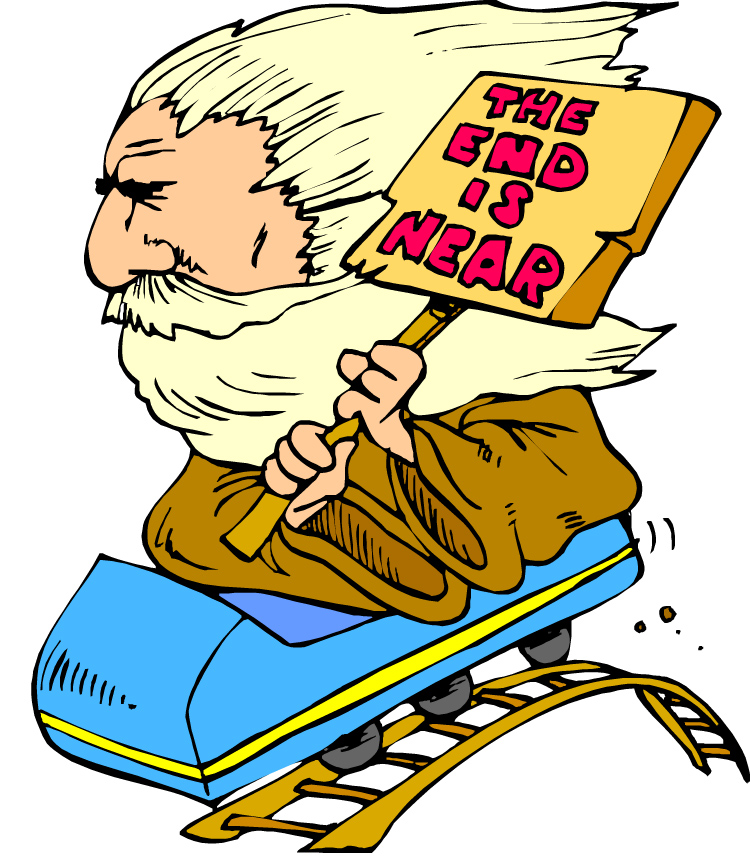
2 Peter 1:21, Prophecy never came by the will of man. This is a key, even foundational verse that is overlooked by most so-called “prophets” in the modern church as well as proponents of “personal prophecy”.

What this verse is saying is that YHVH does not give prophetic revelation to someone because they seek or demand it. In other words, prophetic revelation from heaven does not come on demand. No! It comes as YHVH sovereignly, by his own choice and will, “moves” on holy men (or women) by his Holy Spirit, as this verse clearly states. He chooses when, how and to whom he will give his prophetic words. So those “prophets” who claim to be receiving prophetic revelation from Elohim because they asked for it are suspect, at the very least, of hearing from the dictates of their own hearts. Jeremiah the prophet rebuked the carnally mined, so-called “prophets” of his day for this (e.g., Jer 3:17; 23:17). It is very possible that some of these individuals are psycho-emotionally delusional or have ulterior motives, such as seeking a following for personal benefit or gain. Beware of them!
How many times do we see the true prophets of Elohim in Scripture asking him for a prophetic revelation? True, Yeshua tells his disciples, that is you and me, to ask and we shall receive, seek and we shall find, and so on. But he never tells us that the answer will be immediate. In fact, in the psalms we are admonished repeatedly to “wait on YHVH” for the answers to our prayers.
It is true that Elijah asked Elohim for a divine revelation when in the cave on Mount Sinai and the answer was, as best we can tell, somewhat immediate. The same is true of Moses when he would enter the tabernacle to seek an answer from Elohim on particular matters. Yet how many prophets then and now were of the spiritual calibre of these men and are able to receive a fairly immediate response when asking for divine revelation? Nahum, another true prophet of Elohim, on the other hand, when seeking prophetic revelation had to wait for it (Nah 2:1).
For the majority of biblical prophets like Isaiah, Jeremiah, Ezekiel, Daniel, Amos and others, as 2 Peter 1:21 clearly states, the “prophecy never came by the will of man, but holy men of Elohim spoke as they were moved by the Holy Spirit.” So any modern prophets who claim that Elohim spoke to them when they sought it, are, at best, suspect for not following the biblical model. Again, beware!
Psalms 2 and 64 on “Conspiracy Theories”
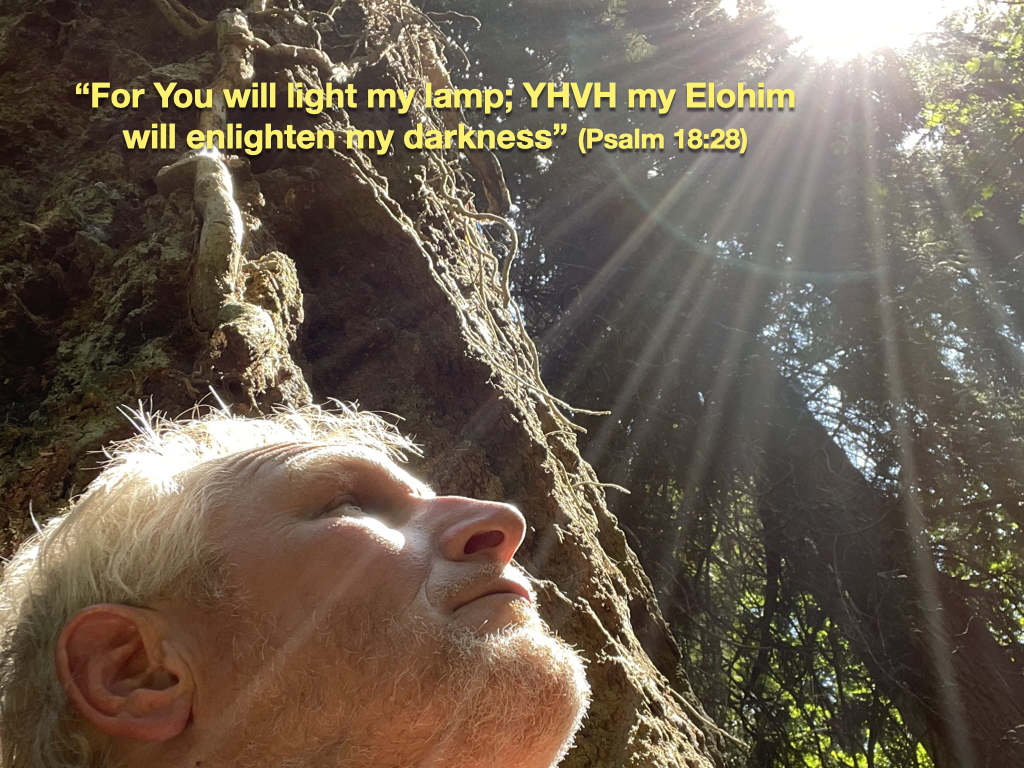
Psalm 64
Psalm 64:2, Secret plots of the wicked. When in human history have the wicked—those who hate YHVH—not been hatching up secret plots and conspiracies in an attempt to overthrow YHVH plans and laws and to destroy those who represent his rule of law and kingdom on this earth?
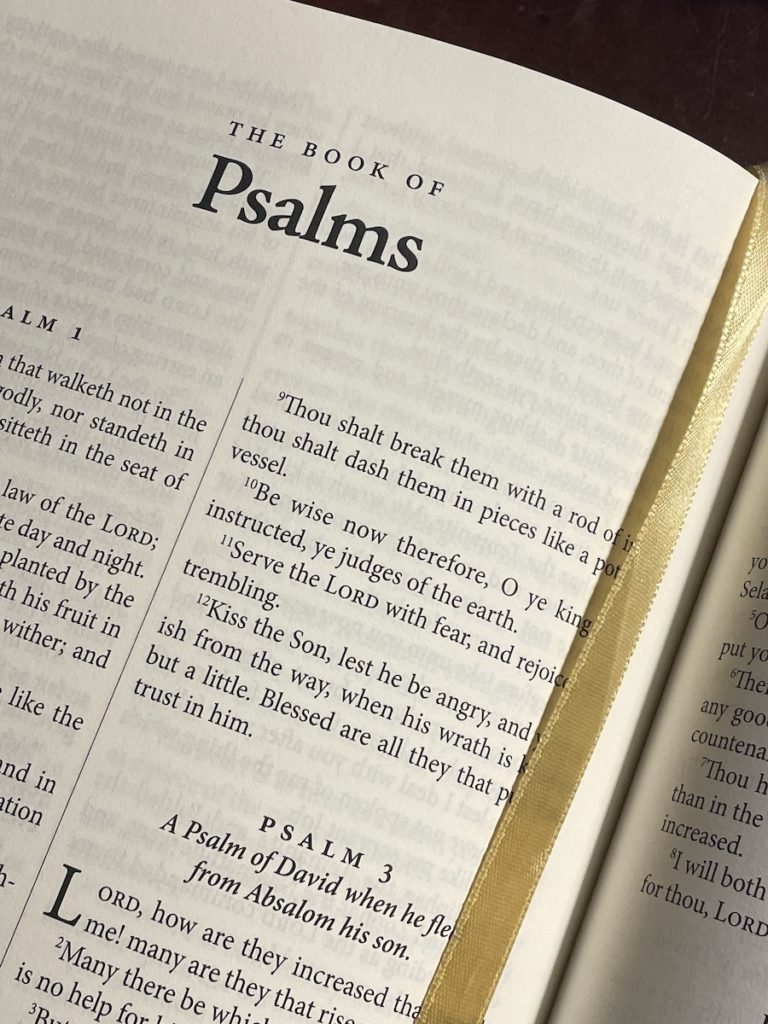
Satan, YHVH’s arch enemy and the one ultimately behind these plots, kicked off this cosmic struggle between the forces of darkness and light, good and evil in the Garden of Eden at the tree of the knowledge of good and evil, when he enticed the first humans to join him in rebellion against haven’s mandates.
This never-ending tug of war between heaven and hell for world domination will culminate in the end times when “rulers [will] take counsel together [i.e., a conspiratorial plot] against YHVH and his Anointed [i.e., Yeshua the Messiah]” (Ps 2:2) in an effort to “break their bands [of YHVH’s rule of law as expressed in the Torah and the Prophets of the Bible] in pieces and cast their cords from us,” (Ps 2:3). Of course, YHVH will laugh in derision or mock and ridicule them for their hubris, and pour his wrath out upon them (Ps 2:4) prior to Yeshua’s second when heaven will place King Yeshua on his holy hill in Zion (Ps 2:6) to rule over the world as King of kings. The book of Revelation prophetically chronicles how this struggle will culminate, even as Psalm two predicts.
All this is to say that the secret plots of the wicked have been going on since man has been on this earth, and they continue to go on to this day. The government-media complex propagandistically derisively refers to this devilish plots as “conspiracy theories” as if to obfuscate their existence and to divert the masses’ attention away from them, but this does not change the fact the wicket of been hatching secret plots to overthrow YHVH and his people since the beginning, even as the Bible clearly shows.
What Does the Bible Say About So-Called“Conspiracy Theories”?
For as long has humans have been on earth, people have formed groups and conceived plans to consolidate resources and riches to rule over other people, forcefully if necessary, for the love of money, power and sexual gratification. It was true when the Bible was written, and it is true today because human nature has never changed from then until now.
The notion that governments and many other organizations are always open and transparent with the people that they supposedly represent or oversee is a belief only for the naive and ignorant. If this were so, then why do governments possess “intelligence agencies” and why do secret organizations exist whose membership is reserved only for certain privileged people and which have elaborate initiation rituals along with penalties if the organization’s secrets are revealed?
Continue readingRevelation 13–17 Commentary Notes

Revelation 13
Revelation 13:1–14, On the rise of Luciferian, antichrist New World Order technocratic system and the mark of the beasts. See notes on Isa 25:7.
Revelation 13:1, The beast…the sea. Two possible end time scenarios may explain the setting of this vision.
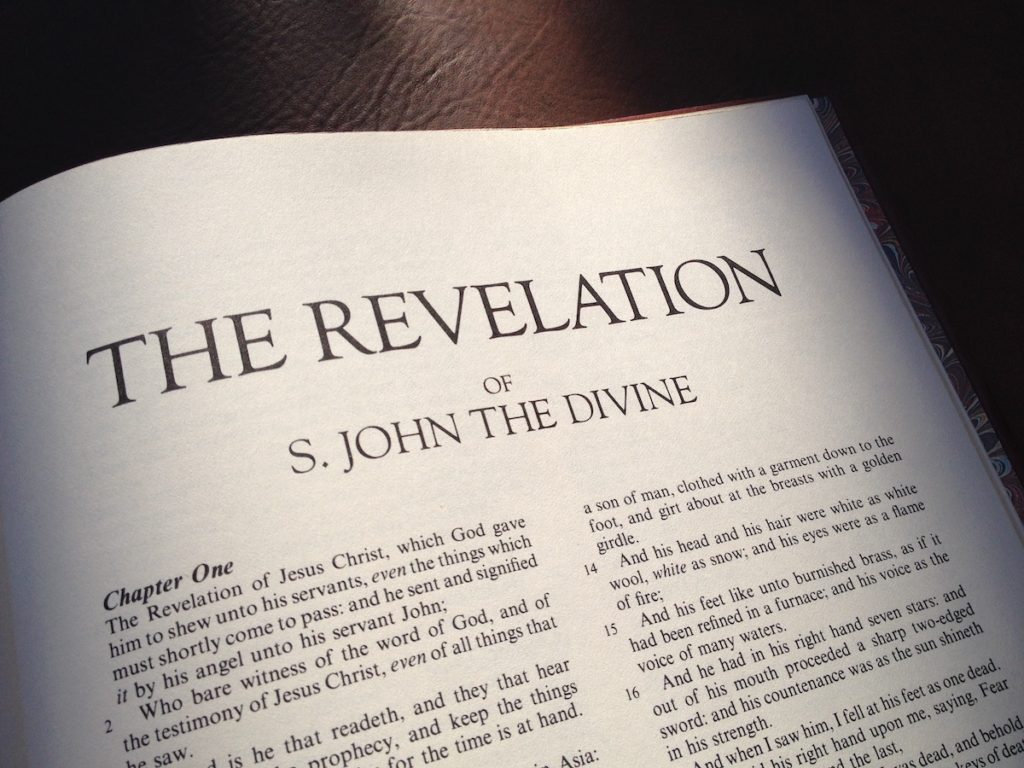
The first scenario is that the beast of Revelation 13 that rises up out of the sea is the end times New World Order, anti-Christ system comprised of the kings of the earth and their armies (see Rev 19:19). This beast is the political and economic branch of the Babylon the Great New World Order system. The metaphor of the sea is a Hebraism meaning “the seas of humanity.” This could be a reference to all the oceans of the earth or just to the Mediterranean Sea, which is in the middle of the earth (the meaning of word Mediterranean) and may symbolically represent all the earth’s oceans. Since all the kings of the earth follows this beast (v. 3), and “all the world” worshipped the dragon who gives authority to the beast (v. 4), it seems that seas is likely a reference to all the seas or oceans of the earth. This beast seems to correspond with the fourth beast of Daniel’s four beast vision (Dan 7:7ff).
The second scenario is that the sea is just the Mediterranean Sea. The island of Patmos from which John received his vision (Rev 1:9) is located just east of Turkey between the Aegean and Mediterranean seas. If this is the case, then the beasts that John sees rising out of the Mediterranean Sea represent localized regional powers and aren’t global in nature. The seven heads being the seven regional empires that have dominated that region over the millennia (Egypt, Babylon, Assyria, Persia, Greece, Rome and the Ottoman Turks) seem to give credence to the validity of this second scenario explaining John’s vision. If this is the case, then the ten horns may be ten end time regional Muslim powers under a caliphate confederacy who conspire together for the destruction of Israel. Perhaps Psalm 83:1–8 is a prophecy pertaining to this. These ten nation of Psalm 83 may be the ten toes of Daniel’s ten-toe prophecy (Dan 2:41–42).
Revelation 13:1, Seven heads and ten horns. The seven heads appear to be the seven “world”-ruling manifestations of this Babylonian beast system down through the ages to the present time (i.e. Egypt, Assyria, neo-Babylon, Persia, Greece, Rome and end times Babylon the Great comprised of all nations [i.e. the New World Order]). The ten horns may be ten global semiautonomous regional governments, which, when combined, comprise all the nations of the earth and make up Babylon the Great. This may be what Daniel saw in the ten toes of the great image of Daniel 2. Perhaps the two legs of that image represent apostate Christianity and Islam—the two great religions of the world, which are in nearly every nation and become semi-united in some bizarre, demonic way. The two legs of Daniel’s image could also represent the first Roman Empire that then broke into the Eastern and Western Roman Empires. The spiritual descendants of the Western Roman Empire is apostate Christianity out of which comes the European and American-based New World Order, which is the head of Babylon the Great. The descendants of the Eastern Roman Empire became the Ottoman Turkish Empire. The fourth beast of Daniel’s four beast vision also had ten horns (Dan 7:7). Daniel speaks of a little horn coming up in the midst of the ten horns, which plucked three of the first horns up by the roots (Dan 7:8). This same horn speaks pompously (Dan 7:8, 11) and makes war against the saints (Dan 7:21, 22, 25) and prevails against them until Yeshua destroys it at his second coming (Dan 7:11, 21, 22). John uses similar language to describe the political and economic beast of Revelation 13:1. This beast also makes war against the saints and overcomes them (Rev 13:7).
Revelation 13:2, The dragon gave him his power. This is the ultimate end-times antichrist system. Also see notes at 2 Thess 2:3–4 where we discuss the parallels between the Man of Sin, Antichrist figure, Isaiah’s prophecy about the fall of Satan (Isa 14), and the Satan-led leader of end times Babylon the Great as prophesied about in this chapter.
Revelation 13:7–8, Every tribe, tongue and nation…all who dwell on the earth. Does this beast have authority over every single heathen on earth, and every last heathen on earth will worship him? In the Scriptures, all and every are sometimes used as hyperbole where exaggeration is used to emphasize a point. (For a discussion of this, see notes at 2 Sam 16:22 and Zech 14:2.)
Revelation 13:8, Whose names. This states that some names aren’t written in the Lamb’s Book of Life. This seems to counter the idea that all humanity’s names are written in the Book of Life, only to be erased when they fail to receive the salvation of the Lamb.
Revelation 13:11, Another beast. This beast is the religious leg of the Babylon the Great New World Order, and comes out of the earth (probably the European or Eurasian continent), since this would be the perspective of the John, the writer. “Out of the earth” could be a reference to the devil and demon spirits coming out of the pit to torment men (i.e. Rev 9:1–11).
Two horns. The religious branch of Babylon has two horns—one that speaks like a lamb and one that speaks like a dragon. Could this be a reference to an ecumenical uniting of apostate Catholic Christianity (with her apostate daughters) and Islam?
Revelation 13:15, The image of the beast. Inanimate objects can be demon possessed.
Revelation 13:16, He. This is a reference to the religious beast. It is this beast who causes all humans to take a mark on their head or hand, in order that they might buy or sell. In other words, the religious beast component of Babylon the Great uses its miraculous power and spiritual deceptions to entice humanity to worship the image of the first or political and economic beast (a cloak for Satanic worship). This false religion beast is behind the effort to kill all those who refuse to worship the image of the beast.
Revelation 13:18, The number of the beast. Which beast is being referred to here—the first or second beast? The first beast would be political figure, while the second beast would be a religious figure.
Continue readingRevelation 12 Commentary Notes

Revelation 12
Revelation 12:1–3, A great sign. According to Ernest Martin in his book The Star That Astonished the Word, in chapter 5(http://askelm.com/star/star006.htm), this passage of Scripture tells us the exact date of Yeshua’s birth; it was the new moon or rosh chodesh of the seventh month, or Yom Teruah, the Day of Trumpets. Martin determines this based on John’s description of the sun and the moon with relationship to the woman or the zodiacal constellation of Virgo, the Virgin. Moreover, he reasons that Yeshua couldn’t have been born during Sukkot, for when Yeshua was born, every man, by Roman edict, was to be in the city of his birth for the Roman census. This activity could not have occurred during Sukkot, for at that time every male was to be in Jerusalem for that festival. According to Martin, Yeshua was born on September 11, 3 BCE.
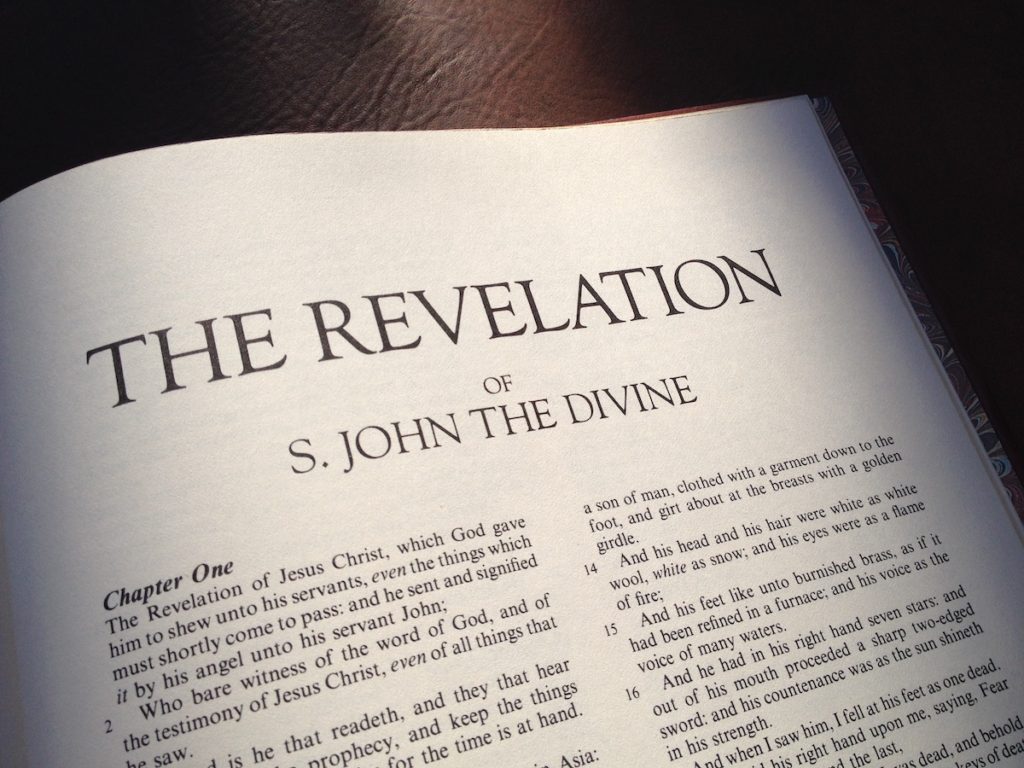
The significance of this date for Yeshua’s birth can’t be overstated. Yom Teruah, according to Jewish tradition and based on Exodos 23:16 and 34:22, marks the date of creation and hence the beginning of the Jewish civil new year. Yom Teruah is on a rosh chodesh or a new moon signifying a renewal or new beginning.
This is the first day and first biblical festival of the fall season,which, prophetically points to events surrounding the second coming of the Messiah leading to his defeating Satan and his henchmen and the establishment of Messiah’s millennial kingdom on earth. This is also the day that many biblical students believe that Yeshua will make his appearance in the heavens of earth’s atmosphere at his second coming and the day of the first resurrection of the righteous dead.
Revelation 12:1–6, Woman clothed with the sun. There is a double prophetic entendré here. The woman refers both to a faithful community of Israelites (a spiritual virgin among the heathen nations of the world) who produced the Messiah, and to the glory of Elohim coming upon an Israelite virgin woman, who gave birth to the Messiah, who would then go on to defeat the devil-serpent. The same woman, or faithful Israelite community, which existed both before and after the coming of the Messiah, is persecuted and forced to flee into the wilderness. Moreover, in Jewish thought, the sun, moon and stars can also represent Jacob, his wife and his twelve sons, who became the twelve tribes of Israel as per Joseph’s dream of Genesis 37:9. Jacob and his offspring eventually became came the faithful community of Israelites out of which came the virgin woman who gave birth to the Messiah.
Continue readingRevelation 9–11 Commentary Notes

Revelation 9
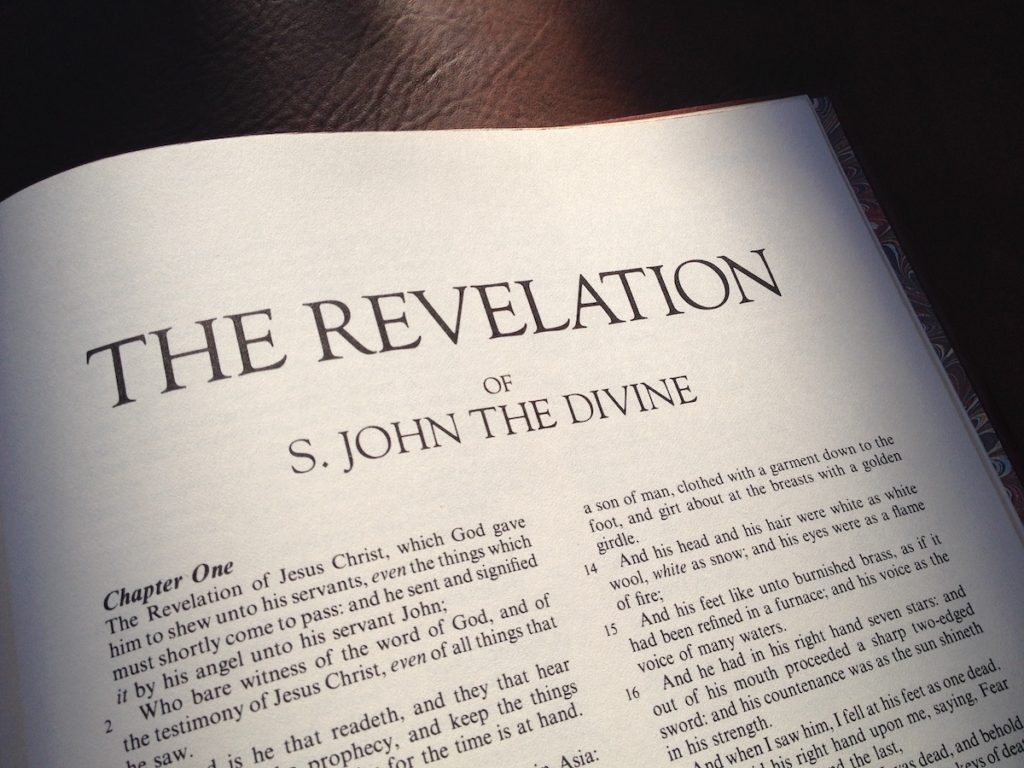
Revelation 9:1, A star fall from heaven. Likely this is referring to Satan when he is finally, once and for all, cast out of heaven. Yeshua spoke of this in Luke 10:18 when he likens Satan’s fall from heaven to a streak of lightening or a shooting star coming out of heaven.
Key to the bottomless pit. In the end times just prior to the second coming of Yeshua the Messiah, Elohim will give Satan the freedom to release evil spirits imprisoned in the abyss who will go forth to torment men as part of YHVH’s wrath against rebellious men. Perhaps this relates to the perennially enigmatic and troubling passage found in Jude 6 (cp. 1 Pet 3:18–20; 2 Pet 2:4). It seems that the evil, locust-like spirits may be the fallen angels that either rebelled with Lucifer and or were the ones who interacted with humans in the antediluvian world (Gen 6:4–6; Jude 6; 1 Pet 3:18–20; 2 Pet 2:4).
Revelation 9:1, Bottomless pit. (See notes at Deut 32:22; 2 Pet 2:4.) This Greek term (abussos phrear) indicates a large, cavernous hole, pit or abyss with a small opening or orifice like a well and is found several other places in the book of Revelation (Rev 9:2, 11; 11:7; 17:8; 20:1, 3). The bottomless pit is analogous to the deepest sheol in the Tanakh (Deut 32:22; Ps 86:13; Isa 14:15) or tartaroo (2 Pet 2:4), and is the place where the angels who rebelled in the time of Satan’s rebellion are being held in chains of restraint awaiting their judgment day (see 2 Pet 2:4). This is also where Satan will be cast at the beginning of the Millennium (Rev 20:1–3), and is to be distinguished from the lake of fire where Satan (and presumably his demons) will be cast at the end of the Millennium to be tormented forever (Rev 20:10).
This passage indicates that YHVH will open the bottomless pit and allow the evil spirits imprisoned therein to torment men for a period of time as part of his judgments against wicked men.
Revelation 9:2, Smoke. Wherever this pit is, it appears to be a place of fire, heat and smoke. The opening of the pit by Satan first releases so much smoke that it darkens the sun and air, if the terminology here is to be taken literally rather than figuratively. If the latter, then the smoke reference could refer to the global spiritual obfuscation that will occur. This phenomenon is the first sign that the demons of the pit are about to be released. After this follows their release and their tormenting of unredeemed humans. This is the wrath of Satan against humanity that precedes the wrath of Elohim. Since Elohim is permitting these demons to torment humans, it is, in reality, an extension of his judgment or wrath against the wicked. Since unsaved humans have rejected Elohim, and more and more are becoming enamored with and turning to outright Satan worship, Elohim his turning them over to the powerful forces of darkness they are seeking over him. These humans will discover what it is like to live in a hellish world where those they wish to serve have full reign to torment them—a world devoid of the protective grace of a merciful Creator.
Revelation 9:3, Locusts. These locusts do not fit the description of the Joel 1 locusts, which destroy all vegetation. Perhaps the vegetation of Joel 1 is a symbolic metaphor. If so, then is the vegetation of Rev 9:3 also symbolic? If so, how do we still reconcile these two passages, since the symbolic analogy of the one would be opposite the other?
These locusts are likely hybridized theriomorphic or animal-shaped descriptions of demonic spirits that have been released from the abyss where they have been kept imprisoned since their rebellion (see 1 Pet 3:19; 2 Pet 2:4), but who will be released to torment rebellious men as part of Elohim’s end time judgments.
Revelation 9:3, Power. (Gr. exousia) These scorpion, humanoid demons have the divine permission, physical and mental power, the authority and right, the ability and strength to torment unredeemed men.
Revelation 9:4, Those men…seal of Elohim. This is yet another proof that YHVH’s saints are on the earth during this period (the first half) of the wrath of Elohim, and that the pre-tribulation rapture theory is an unbiblical concept. What is the seal of Elohim? If we let Scripture interpret Scripture, this seems to be a reference to the sealing of the Set-Apart Spirit of the saints (e.g. John 6:27; Rom 4:11; 2 Cor 1:22; Eph 1:13; 4:30; 2 Tim 2:19 cp. Rev 7:3).
Revelation 9:5, Not kill…tormented. Torment (Gr. basanizo) means “to test the quality of a metal; to question by applying torture; to vex with grievous pains (of body or mind), to torment; to be harassed, distressed.” The demon-locust humanoid creatures can torment and torture unsaved humans, but not kill them. Those who have the seal of Elohim on their foreheads will be untouched. It seems that this will be an amazing opportunity for the sealed saints to evangelize the spiritually lost.
Scorpion. A scorpion can be a biblical idiomatic metaphor for a demonic spirits over which Yeshua gave his disciples authority to trample on as well as other all the powers of Satan (Luke 10:19).
Torment of a scorpion. The symptoms of most scorpions stings are relatively harmless, but the bark scorpion (Centruroides sculpturatus, also known as C. exilicauda), found in the American southwest, is an exception. This species of scorpion is venomous and can cause more serious injury and illness. Initial symptoms include immediate pain and sometimes numbness or tingling in the region stung. Serious symptoms, most common among children, include restlessness, muscle spasms, abnormal and random head, neck, and eye movements, anxiety and agitation, sialorrhea and diaphoresis. In some cases, a scorpion bite can prove fatal for children. In adults, tachycardia, hypertension, increased respirations, weakness, muscle spasms, and fasciculations may predominate.
Revelation 9:7, Locusts. This is likely some demonic, grotesque gargoyle-like demonic creature (or chimera) that is currently inhabiting the bottomless pit, but that will be released at this time for YHVH’s intended purposes.
Revelation 9:21, Sorceries. Gr. pharmakeia. Pharmakeia is a methodology to circumvent Elohim and to open the doorways into the supernatural. It is the mix of science along with magical arts, occultic or hidden, demonic, angelic or paranormal realm and medicine, potions, or herbs for sorcerous reasons to open the mind so that one is in contact with what is beyond the gate or the boundaries YHVH has established between the natural and supernatural (including the demonic) realm.
The Satanic spirits in Revelation chapter nine inhabit the pit, and those who resort to pharmakaia are coming into contact with spiritual entities either from the pit, or from the realm of darkness beyond this earth. Satan is both the angel of the bottomless pit (Rev 9:11) and the prince of the power of the air (Eph 2:2). There are spiritual gateways or portals down to the pit and out into the universe by which humans can contact beings from other dimensions. There are good and evil portals. YHVH revealed to Jacob a good portal or gateway to heaven at the site of the future Temple Mount when he dreamed of the ladder to heaven (Gen 28:10–16). Yeshua is the only gate or doorway to the Father in heaven (John 1:51). But there are evil gateways that men can open up illicitly through pharmakeia or drug induced states.
Biblical examples of individuals illicitly opening up gateways into the evil realm beyond man’s perception include the witch of Endor who summoned the dead (1 Sam 28:3ff) or demoms masquerading as dead people. We also see this with the slave girl who was possessed with a spirit of divination and who followed Paul in Macedonia (Acts 16:16–18).
Those who come under the influence of pharmakeia put themselves into a drug-induced state to activate gateways into the supernatural realm. Doing this is a form of rebellion against YHVH’s established boundaries that man is not supposed to cross. Witchcraft is also taking something holy and exploiting it for personal purposes. This is what Samuel accused Saul of doing when he kept the cattle he was supposed to kill, so that he could, at a later time, offer up an illicit sacrifices without going through the proper Levitical protocols. Samuel equated this act of rebellion with witchcraft (1 Sam 15:23). Saul had this proclivity, for he had offered up a witchcraft sacrifice once before (1 Sam 13:9–13). Samuel rebuked him for it, yet Saul was willing knowingly to repeat the same mistake again, which was strictly forbidden. Taking that which YHVH has ordained to be used legally one way and defiantly using it another way for one’s own selfish purposes is an act of rebellion and witchcraft.
Revelation 10
Revelation 10:1, Mighty angel [or messenger]. Likely this is Yeshua who is not an angel, but Elohim’s Heavenly Messenger.
Revelation 10:2, A little book. Likely referring to the book of Revelation.
Revelation 10:10, You must prophesy again. It appears that the Book of Revelation was written in two parts. Part one was likely written before A.D. 70 when the apostles, based on prophecies in Yeshua’s Olivette discourse, expected the end of the age to occur followed by the second coming. Part two was likely written toward the end of John’s life at the end of the first century. If these conjectures are correct, then Revelation part one ends at the Rev 10:11 and Revelation part two begins at Rev 11:1. Part two is the fulfillment of Yeashua’s prophecy to John that he must prophesy again. (For more info on this subject, see Restoring the Original Bible, pp. 327–330 by Ernest L. Martin and Beyond Acts, pp. 294–299, by Paul R. Finch).
Revelation 11
Revelation 11:3, One thousand two hundred and sixty days. This calculates out to be exactly three-and-one-half years on 360 day year. For a 365.24 day year, this comes out to be 3.45 years.
Revelation 11:3–14, My two witnesses. There is much speculation as to who these two witnesses may be. Moses and Elijah seem to be the chief contenders for these two spots in the eyes of most people. However, we might do well to consider also Moses and Aaron as well.
YHVH Elohim used Moses and Aaron as his proxy to warn Pharaoh and Egypt before bringing his severe and final judgments upon that nation that would end up destroying it. Moses was in the place of Elohim, while Aaron was his prophet or spokesman (Exod 7:1).
Whoever the two witnesses will be, in the end times, history will likely repeat itself. YHVH will raise up the two witnesses of Revelation 11 who will, like Moses and Aaron, warn the world to repent just before YHVH pours out his final judgments that will bring down the Babylon the Great new world order system. This will result in redeemed Israel (or the saints) being completely set free from the spiritual “Egypt” of this world setting in motion the final redemption or second exodus of the scattered tribes of Israel back to the land of their inheritance, where they will join their brother Judah who has, to one degree or another, already returned.
Revelation 11:3, Sackcloth. The Greek word sakkos means “a receptacle for holding or carrying various things, as money, food, etc.; a course cloth, a dark course stuff made especially from the hair of animals; a garment of the like material, and clinging to the person like a sack, which was wont to be worn (or drawn over the tunic instead of the cloak or mantle) by mourners, penitents, suppliants and also by those who like the Hebrew prophets, lead an austere life.”
Revelation 11:31–12:2, The ark of his covenant…woman…being with child. As the ark of the covenant was the symbol of YHVH’s presence with his people Israel, which presence left the temple and Israel due to that nation’s apostasy prior to its conquest by Babylon, so the birth of Messiah speaks of YHVH’s glory returning to Israel. This is why John juxtaposes the ark and the birth of the Messiah in these verses. This is why Haggai encouraged the building of the second temple and prophesied,
‘and I will shake all nations, and they shall come to the Desire of All Nations, and I will fill this temple with glory,’ says YHVH of hosts.… The glory of this latter temple shall be greater than the former,’ says YHVH of hosts. ‘And in this place I will give peace,’ says YHVH of hosts.” (Hag 2:7, 9)
Revelation 11:19–12:1–2, 4–5, The ark of his covenant…her Child. The juxtapositioning in this passage of the heavenly ark of the covenant and the birth of the Messiah is more than an interesting coincidence as Micahel Heiser points out. “The ark was the central symbol of God’s presence with Israel. The birth of the [Messiah] in Rev 12:1–7 was John’s way of saying that the presence of God had indeed returned to earth in the form of the Child, the Messiah,” (Reversing Hermon, pp. 65–66).
Revelation 4–8: Natan’s Commentary Notes

Revelation 4
Revelation 4:3, Jasper…sardius stone. Jasper is brick red in color and sardius (also called sardine or carnelian) is red orange in color. Both have quartz as their base mineral mixed with other minerals to give the color. The face of Yeshua also shines like the sun (Rev 1:16); therefore, his face radiates a brick, red-orange color.
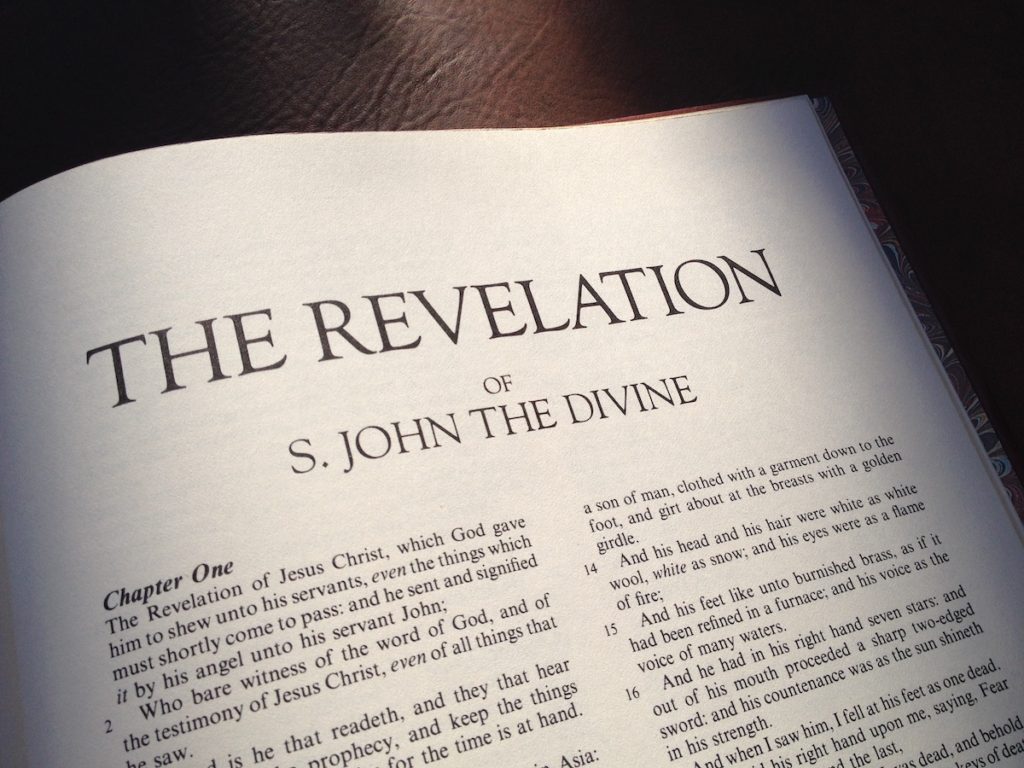
Rainbow. The throne of Elohim is surround by a rainbow. He is bathed in light, a biblical metaphor for truth. That light is split like a prism into the seven main colors of the rainbow, but, in reality, there is an infinite number of color variations. This speaks to the fact that the truth of Elohim is simultaneously gloriously beautiful and infinitely unsearchable in the multiplicity of its dimensions.
Like an emerald. The rainbow isn’t a typical earthly one, though, since it has a greenish hue to it. Green is the color signifying life.
Revelation 4:8, Holy, holy, holy. We need to shift our thinking to see that holiness not love is the primary or most notable attribute of YHVH Elohim. On what basis can we make such a bold assertion, since it flies in the face of what most Christians teach and believe? The answer is simple. In the throne room of Elohim the seraphim constantly cry, “holy, holy, holy” in reference Elohim and not “love, love, love” (Isa 6:3; Rev 4:8). Certainly, the Scriptures reveal that YHVH is love (1 John 4:8,16), but this is an attribute of his holiness. It would behove us to thoroughly study the scriptural concept of holiness as applied to YHVH. It is more convenient for sinful men to focus on YHVH’s love rather than on his holiness. To the carnal mind, love seems to excuses sin more, while holiness seems to demand more accountability and repentance before a just and righteous Elohim. On the basis of Elohim’s love, we feel that we can come into relationship with him “just as we are.” On the other hand, holiness convicts us of sin and demands that we repent of it if we are to enter into relationship with our Creator. To subscribe to false concepts about the nature and character of Elohim is to create a god in our own image, which is humanism and idolatry. To the degree that we subscribe to false concepts about him is to the degree that he cannot use us for his purposes.
Revelation 6
Revelation 6:2, White horse. In this a reference to the end times Muslim Mahdi Antichrist? Also, it is interesting to not that Muhammad’s horse, name Buraq, was also white.
Revelation 6:9, Under the altar…souls. Souls under the altar, in biblical Hebraic thought, is another way of saying that when you die, your soul dies too and goes into the grave of the earth or ground along with your body awaiting the resurrection when your body and soul (i.e. your personality—your mind, will and emotions) will be reunited with your personal spirit or divine essence that goes back to heaven when you die.
The altar is a poetic metaphor for the earth. Remember that the Bible says that heaven is Elohim’s throne and earth is his footstool (Isa 66:1; Matt 5:35; Acts 7:49). For example, the altar in the tabernacle was constructed of a pile of rocks placed on the bare earth and the blood of sacrificed animals was poured out on the earth. To me, the phrase “under the altar” (Rev 6:9) speaks of the human body being buried under or in the earth when they die where they await the resurrection.
We know that souls are not immortal; they don’t go to heaven when a person dies, contrary to what the church teaches—a false teaching they picked up from the Greek philosophers, not from the Tanakh!
On the contrary, the Tanakh tells us that the soul that sins dies (Ezek 18:4) and goes into the grave (Ps 16:10). Yeshua’s soul died when he went into he grave (Ps 16:10; Isa 53:12), but his spirit (his breath and his personal spirit) went up to heaven to be received of his Father (Luke 23:46) as did Stephen’s (Act 7:59). The same is true for all humans (Eccl 12:7).
The idea that the altar is the earth is further corroborated in Jewish thought. The Jewish sages teach us that the four horns on the four corners of the altar of sacrifice in the tabernacle symbolically represent the four corners of the earth. “[T]he expanse of the earth is more than a huge altar, dedicated to God” (The ArtScroll Tehilim/Psalms Commentary on Ps 118:27), and at death, the soul is not immortal, but simply goes into the grave with the body awaiting the resurrection (Pss 16:10; 49:15; Ezek 18:4).
Moreover, if the soul were immortal, than the lie the serpent told the first humans about not dying after going against Elohim’s instructions (i.e. committing sin) would be true wouldn’t it (Gen 3:4)?
Revelation 6:12–7–14, Great earthquake…four angels…wind…great multitude. See notes at Ezek 37 cp. Matt 24:29–31.
Revelation 7
Revelation 7:2, Seal of the living Elohim. What is the seal of God (Rev 7:3)? A seal is a signature, stamp, sign, brand or identification mark signifying ownership. A seal in the forehead symbolizes that the one who has the mark is completely yielded and subservient to the one who placed the mark. The concept of sealing believers is mentioned several times in the Scriptures.
Revelation 7:5–8, The 12 tribes of Israel. Why is the tribe of Dan not mentioned? (See notes at Matt 16:13.) It is also interesting to note the Ezekiel in his description of the apportioning of the Promised Land to the 12 tribes during, presumably, the millennial period, mentions the tribe of Dan (Ezek 48:1–2) and he even has a gate in the New Jerusalem name for him (Ezek 48:32). Obviously despite Dan’s apostasy, YHVH still has a loving heart for his lost and scattered children and is able to redeem them from the spiritual darkness in which they have been trapped.
Revelation 7:6, 8, Manasseh…Joseph. Why is Manasseh and not Ephraim mentioned? If Joseph encompasses both tribes, then why is Manasseh mentioned? Perhaps it’s because Ephraim was the birthright tribe with the double blessings, and therefore took the place of Joseph.
Revelation 8
Revelation 8:11, Wormwood. There is much speculation as to what this wormwood star is. One consideration is that Satan is the star who fell from heaven (Luke 10:18 cp. 12:9 and Isa 14:12). He is the archenemy of YHVH who has led men into rebellion against his Torah by perverting the Word of Elohim as he did at the tree of knowledge with Adam and Eve. In the Tanakh, the term wormwood is used as a poetic metaphor for the curses that come upon the people of YHVH when they forsake his Torah (Jer 9:13–15; Deut 29:18). The star in this verse falls upon one-third of the fresh waters. Waters can be taken as a metaphor for the peoples of the earth (Rev 17:15). Interestingly, one-third of the earth’s population professes to be Christian, which holds as a fundamental tenet the rejection of the Torah.

